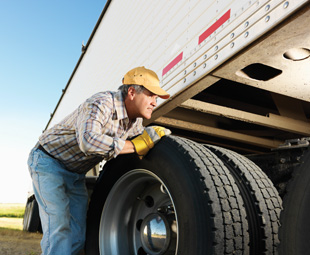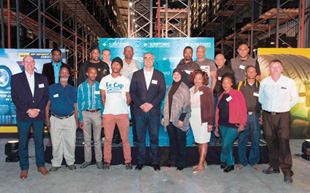Will Redisa die?

Following Minister of Finance Pravin Gordhan’s 2016 Budget Speech there has been debate around the announcement of new taxes and levies. A case in point is the tyre levy. Will this replace the existing Recycling and Economic Initiative of South Africa’s (Redisa’s) waste management fee, which has been in place for the last three years? In fact, does Redisa have a future? Hermann Erdmann, CEO of Redisa, explains
Redisa is not a government body and is, therefore, not aware of what the proposed tyre levy entails. The Redisa Plan is the outcome of collaboration between government and the private sector. The Department of Environmental Affairs (DEA) drove legislation enabling the establishment of the Plan.
Through the waste-management fee, Redisa’s plan makes local manufacturers and importers of tyres accountable for what they produce. It creates a system that ensures that waste tyres are recycled, thereby reducing the adverse effect on the environment, while developing new products from recycled materials. The net effect has important upstream and downstream implications, which are promoted by Redisa.
What is the difference between tax and the waste-management fee?
Understanding the difference between the Redisa waste-management fee and tax is critical to ensure the ongoing success of this new recycling development.
Tax is a compulsory contribution to state revenue, levied by government on workers’ income and business profits, or added to the cost of some goods, services and transactions. Money collected from taxes goes into the general fiscus.
The waste management fee, on the other hand, is paid by producers to offset the cost of dealing with tyres once they reach end-of-life. The Redisa Plan does not determine that consumers carry the cost: it is up to tyre producers whether and how they recover their cost.
A critical difference is that this money is directly and specifically applied to dealing with the product and building the recycling industry. These funds are managed responsibly, in an audited and accountable fashion, making this system far more effective than a tax-based system where funds are diluted into the general Treasury pool without being ring-fenced.
It is important that Redisa collect the waste management fee, because this allows it to change the fee structure that producers and importers of tyres pay according to an environmental rating system currently being developed. To this end, Redisa is building a tyre Product Testing Institute to test tyres and environmentally rate and certify each type of tyre. Currently, the waste management fee paid to Redisa is standardised at R2,30 per kilogram.
Once an environmental rating system has been developed and linked to tyre homologation standards, Redisa will be in a position to set a new pricing structure. This will allow those tyres manufactured using better environmental standards to have a lower fee, while those tyres that produce more adverse environmental effects when manufactured will have a higher fee.
This capacity to introduce a differentiated fee structure is absolutely fundamental to the Redisa business model, because it creates an upstream incentive for tyre manufacturers to change their production methods to cleaner technology and lower environmental impacts.
This means that, in the long-term, if all tyre producers start using production methods that are fully cradle-to-cradle certified, then the waste-management fee charged in South Africa will reduce to zero as the associated environmental impact will be zero.
How does the management fee differ from plastic bag tax?
The levy on plastic bags was introduced in 2004 to encourage reuse and recycling, while mitigating the environmental impact of plastic bag pollution.
One of the key challenges of the plastic bag tax is that the funds collected go directly to the government fiscus, and the DEA has to apply to Treasury to recoup monies in order to develop the promised recycling industry.
A non-government organisation (NGO) called Buyisa-e-Bag was set up as the implementation arm, but was wound up in 2011 without being able to achieve its objectives. The organisation was originally responsible for establishing the plastic recycling industry, with the intention of creating and supporting the expansion of collector networks, setting up rural collection companies, working with NGOs to increase capacity in rural areas, and help to create jobs.
A study by the Council for Scientific and Industrial Research (CSIR) reported that in the financial year ending in February 2006, only seven percent of the levies collected actually got paid to Buyisa-e-Bag, so it is perhaps not surprising that the organisation shut down with little to show for its efforts.
In contrast, when the Redisa Plan was legislated, Minister Molewa emphasised that the waste management fee collected would not end up in the general fiscus, and that it would be the responsibility of those introducing the waste (for instance tyre manufacturers and importers) to pay for the remediation of the resulting waste. The advantage of this system is that Redisa is 100-percent accountable for what happens to the funds. Strict corporate governance practices and audit requirements ensure these funds are utilised according to the mandates set out in the Plan.
Without the waste management fee being used as prescribed in the Redisa Plan, the new tyre recycling industry would not have been established, and the creation of jobs, small businesses and other socio-economic benefits would not be possible.
So what next?
South Africans generate more than 108-million tonnes of waste per year and only ten percent of this is recycled. Redisa has always believed that by looking at waste differently, from a circular economy perspective, it can be used to grow the economy.
The reality is that most businesses do not see the waste that comes from their products or operations as their problem, and few factor the cost of recovering and recycling this waste into the manufacturing cost. By providing the mechanism that allows industry to meet its “extended producer responsibility” requirements, Redisa ensures that the product manufacturer is responsible for the entire lifecycle of the product – and especially for the recycling and final disposal thereof.
The Product Testing Institute is an important enabler of the circular economy in the tyre industry. This is an exciting approach that will eliminate threats to the environment and resources, and will positively contribute to the growth and development of the economy.
The circular economy approach could be used successfully to recover and recycle plastic waste, as well as waste from agriculture, organic chemical processes and mining operations, to name a few. This would generate major socio-economic and environmental benefits, going far beyond what has already been achieved in the waste tyre sphere.
The Redisa Plan has proved to provide a solution to government at no cost to the fiscus, and drives gross domestic product (GDP) and employment growth.
Dunlop’s new distribution facility support’s growth capacitysupport’s growth capacity
Dunlop South Africa’s new purpose-built warehouse in Cato Manor, Durban, has allowed the company to acquire a firm grip on its escalating distribution needs locally and into Africa.
 The new 12 500 m2 site, which has storage capacity for more than 200 000 tyres, adds to a series of investments being made by Dunlop’s parent company, Sumitomo Rubber South Africa (SRSA). The site was developed in five months and is leased to Dunlop by Durban-based commercial property developer Newlyn Group.
The new 12 500 m2 site, which has storage capacity for more than 200 000 tyres, adds to a series of investments being made by Dunlop’s parent company, Sumitomo Rubber South Africa (SRSA). The site was developed in five months and is leased to Dunlop by Durban-based commercial property developer Newlyn Group.
SRSA’s flagship Dunlop brand, as well as its Falken and Sumitomo tyre brands will be housed at the new premises.
SRSA CEO Riaz Haffejee says the move from the previous location in Sydney Road, Umbilo, which had been occupied for 80 years with Dunlop House being preserved as a heritage building, was spurred by the increasing demand for products in the rest of Africa, as well as to cater for anticipated growth in the supply of tyres to the automotive manufacturing sector.
“The investment made in systems, planning, technology and infrastructure will now easily position us to accommodate this demand. We are proud to announce the beginning of a new era for Dunlop,” Haffejee adds.
The property will house a 650 m2 technical examination centre for on-site consumer quality testing in addition to the 7 200 m2 bonded warehouse facility. More than 200 temporary jobs were created during the construction phase of the development, coordinated with the help of the local ward councillor.
Published by
Focus on Transport
focusmagsa




